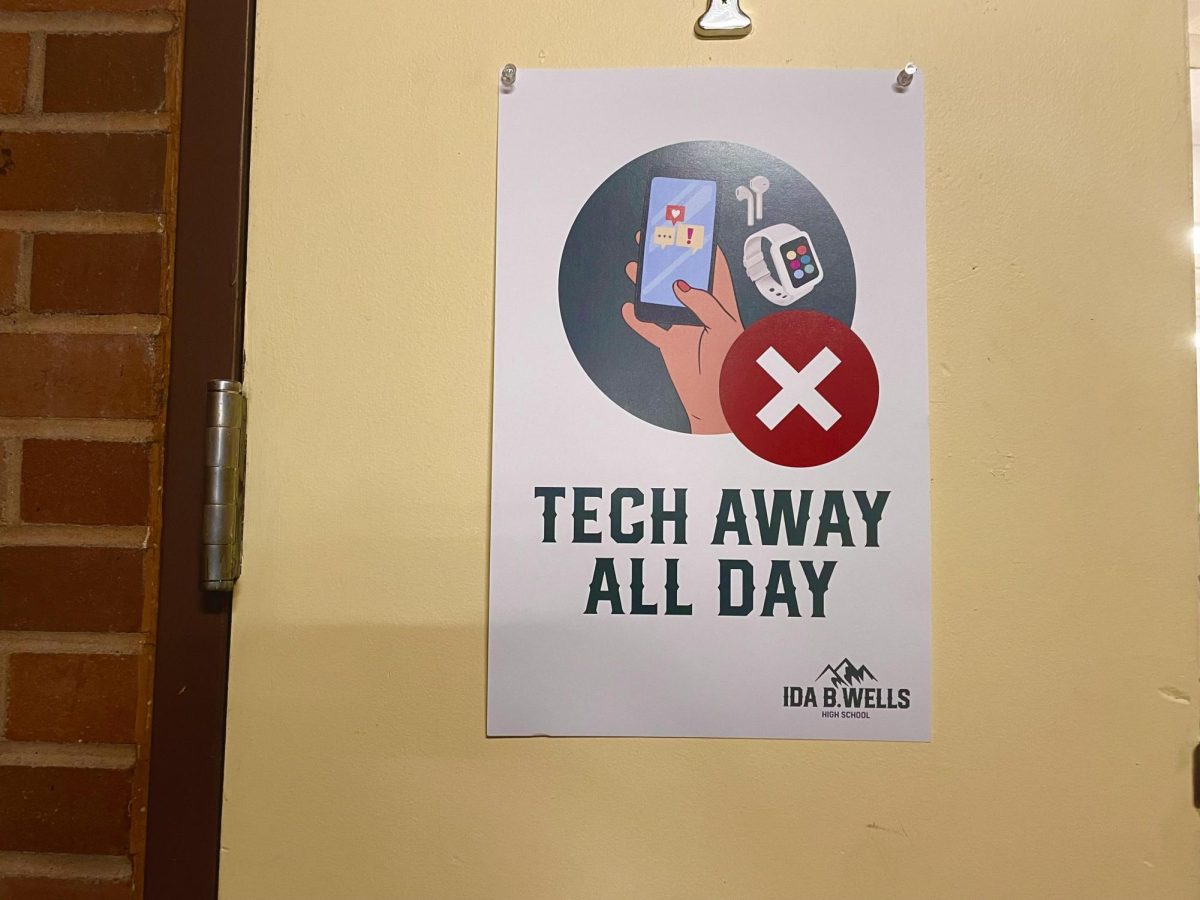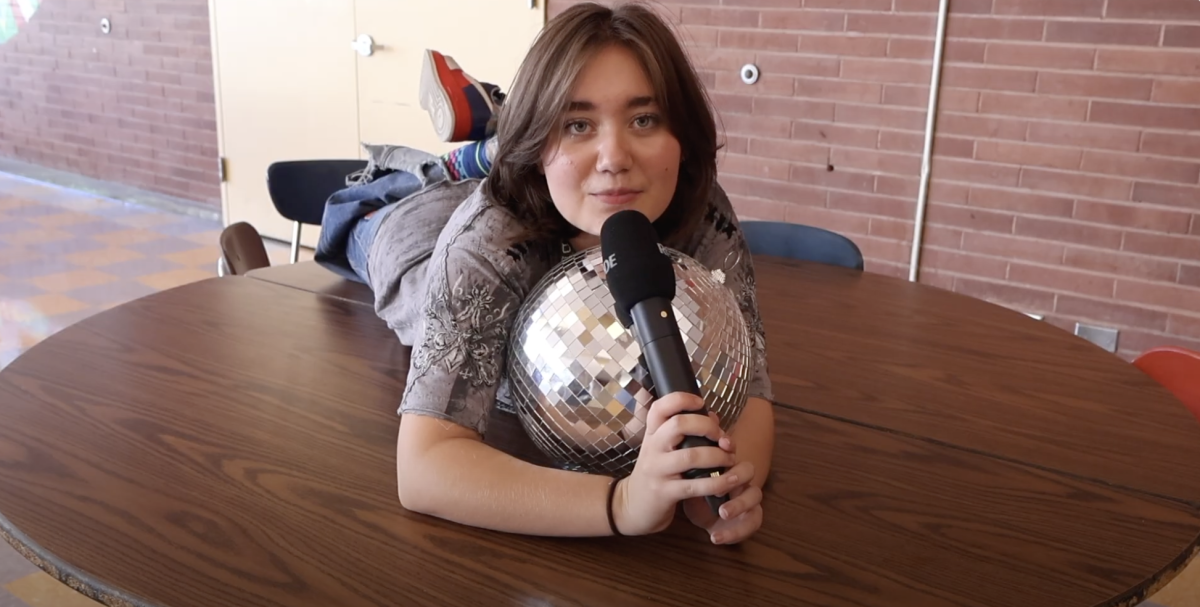Away all day is here to stay? From caddies to Yondr pouches, to outright bans, solutions to combat phone use in class have been implemented all over the Portland Public School district. Ida B. Wells-Barnett High School introduced the “Tech Away All Day” policy. This requires students and staff to keep their phones silenced and out of view during all school hours; the only exception being lunch. Despite the positive goals of Tech Away All Day, many are concerned with how it will affect student-staff relationships and question the policy’s effectiveness.
Distractions in the classroom are nothing new. “Each technology upgrade would bring new challenges,” said Jeremy Shetler, CCE teacher at Ida B. Wells. From a teacher’s perspective, however, the age of social media and fast-paced content has caused student attention and retention to drop to an all-time low. According to a survey conducted by the Pew Research Center of 2,531 K-12 teachers from the American Teacher Panel, 72% of teachers struggle with students being distracted by their cell phones during lessons.
A big motivator for pushing Tech Away All Day is increasing student social connection. At IBW, a lot of teachers have reported seeing more face-to-face social interactions between their students. “I used the phone caddy last year and would give tech breaks as well. And breaks were pretty much just silence, people were just scrolling on their phone, people weren’t talking,” said Alexa Bryant-Capellas, an English teacher at IBW, “now I see people talking, I see people doing other creative things together, and generally having fun.” From a student perspective, it’s not so black and white. “If I was going to be talking to [my best friend] I would be doing that whether I have my phone or not, and if there’s people I don’t know sitting around me, I’m not going to be talking to them even if I don’t have my phone,” said Elise Gorsegner-Harless, a junior at IBW.
A concern from students is that Tech Away All Day isn’t addressing the big reason for student disengagement — boring lessons and too much work time. Kalia Lester, a junior at IBW said “[Tech Away All Day] does highlight how some teachers are mind-numbingly dull, and I think they gave up on teaching at least 15 years ago.” Another junior at IBW, Henry Elkin shares the sentiment “The one problem that I’ve had with [Tech Away All Day] is definitely not having stuff to do. Like after I finished a test in 20 minutes when we had the whole class period to do it, I got told not to play any video games on my Chromebook, and I couldn’t do any of my homework, so there wasn’t really much to do.”
Another goal of Tech Away All Day is student creativity. “For the last few years with screens and everything, my desks are so clean…that curiosity to create and cure that boredom has disappeared,” said Shetler. Phones are often the first thing kids turn to when there isn’t much work to do or engagement is low in their classes. The hope with this policy is that by taking away the immediate decision for students to pull out their phones, they will be more inclined to be creative when they’re bored.
The implementation of Tech Away All Day at IBW has been rocky so far, with administrators making reports of student phone use in the hallways and bathrooms during classes. This is leading some teachers to worry about the impact on student-teacher relationships. “It is hard at the beginning of the year to build relationships with students when you immediately have to jump into a disciplined role,” said ABC. Teacher-student trust and rapport are a huge part of the learning environment, and disruption to that could lead to a more difficult time with student attention and feelings of safety. “[Tech Away All Day] turns teachers into traffic cops,” said ABC.
This is a sentiment shared by some students. Tech Away All Day was introduced at IBW right after the new attendance policy, which states that a student has to have 90% attendance in order to attend the Homecoming dance, and potentially others in the future. This put the school administration at odds with the student community. ”Before the attendance policy, I had a rather neutral view of the administration, and then the attendance policy came along and I was like ‘well that’s a little interesting’ and now this,” said Gorsegner-Harless, “if we’re constantly being given more reasons to not like admin, that doesn’t help the health of the community.”
For teachers who have succeeded in implementing the policy, the benefits are already showing. Teachers have been noticing more focus during lessons and smoother transitions between subjects.
A factor that could limit the effectiveness of the policy is that school-provided devices like Chromebooks are replacing phones as distractions for many students. “It’s always been the natural next step…when I’ve asked students to put phones away even before we had phone caddies or a very specific tech policy, Chromebooks were the immediate next piece of technology that got taken out,” said ABC.
So far, it’s hard to say if Tech Away All Day is the way to go. It will take more conversations to find the most effective compromise between student and teacher wants.










Aimee Mastrolonardo • Sep 28, 2024 at 10:23 am
I’m honestly concerned about emergencies.
If there is a lockdown and something serious is happening, I want my son to have access to his phone.
School shootings are a huge problem and teachers/kids have used their phones to alert police and talk to family.
In an emergency, if everyone has to hide in a corner, could it be too risky to get to where the phones are hidden?
And if they can, can they disburse them to all the students?
For some families, the last they heard from their kids are through their phone.
Cell phones have been used to tell police where they are and helped them pinpoint where the shooter is.
I know cells are a problem, but my son has his because I want to know we can contact each other during an emergency.